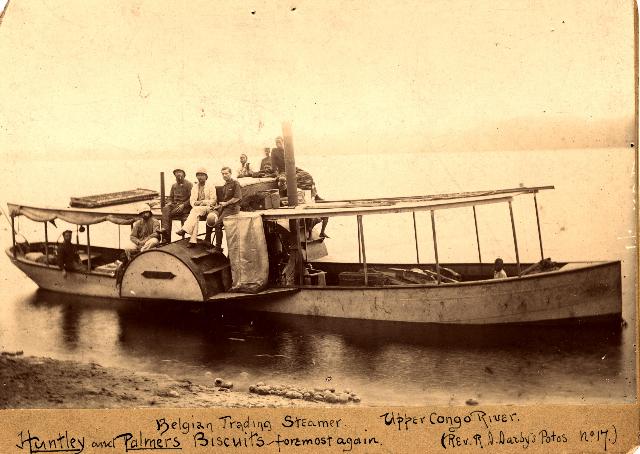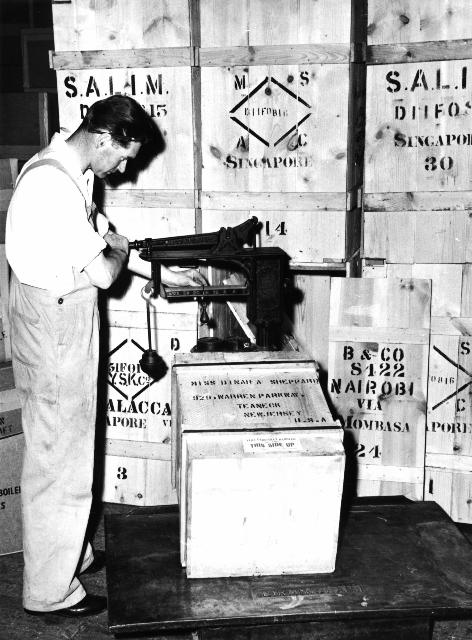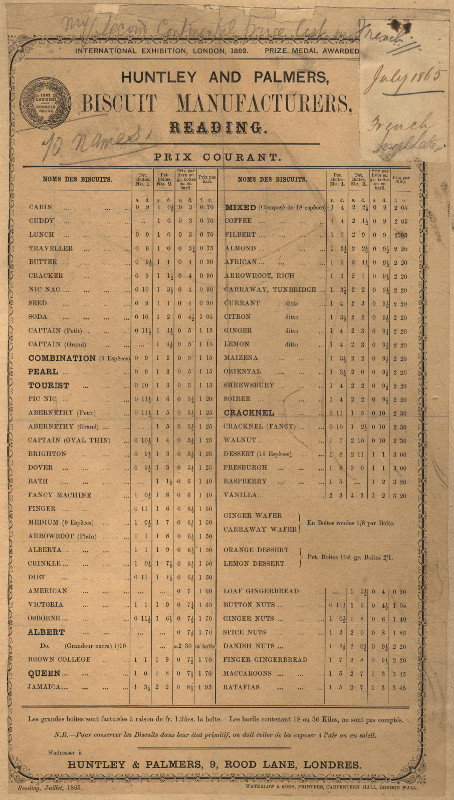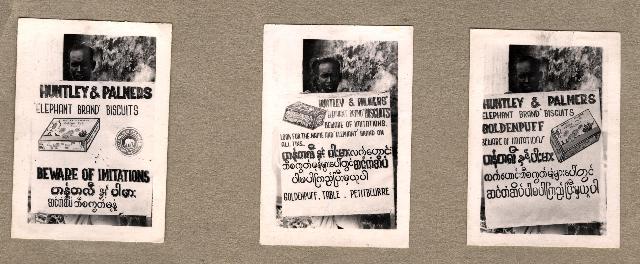By 1900, Huntley & Palmers were the largest biscuit manufacturer in the world, exporting to Africa, the Americas and the Far East. Their biscuits were purchased by royalty across the globe from Britain to Siam and they were an essential food item for explorers, including Scott of the Antarctic. The firm's name even travelled along trade routes ahead of western expeditions. In 1904 the first Europeans to visit the holy city of Lhasa in Tibet were welcomed with Huntley & Palmers biscuits.
Huntley & Palmers had benefited from European colonial expansion in the 19th century to source ingredients and raw materials, and to reach new markets for their cakes and biscuits. In his 1899 novella The Heart of Darkness, Joseph Conrad used the image of an empty Huntley & Palmers tin as a symbol of the oppression, exploitation, and destruction caused by European colonial powers in Africa.

A trading steamer on the Upper Congo River, a tin of biscuits is visible by its funnel. The photograph's mount is inscribed 'Huntley & Palmers biscuits foremost again', about 1890 (REDMG : 1997.82.518)
The start of the export trade
When George Palmer joined the partnership in the 1840s other businesses were already exporting British foods. This included Banbury cakes which were sent in wooden boxes to India, Australia and the Americas. However Huntley & Palmers had one major advantage over other food suppliers - their tins. In these tins their biscuits could stay fresh for years as they travelled across the world.

A worker weighs a wooden case destined for the USA in the Huntley & Palmers packing department. Other cases in the background are stamped with Mombasa and Singapore. (REDMG : 1997.130.134)
First continental representative
Although Huntley & Palmers had been selling biscuits abroad prior to 1865, it was the appointment of a continental sales representative that led to a boom in their overseas sales. In 1865 Joseph Leete proposed to Samuel Palmer that he should seek orders for Huntley & Palmers biscuits in Europe. He set to work and in his first full year, 1866, brought over £10,000 worth of business to the firm.

This single sheet price list is the original export and continental price list carried by Leete when he started representing the firm in Europe on 1 April 1865. (REDMG : 1997.162.57)
In 1867 he secured Royal Warrants of Appointment from Leopold II of Belgium and Napoleon III of France. Joseph Leete's territory eventually stretched as far as Russia, Turkey and the north coast of Africa. The rest of the world, not within the remit of Joseph Leete, was covered by the Export department. However it took until 1888 before Huntley & Palmers established their first representative in North America. Nevertheless, by the turn of the century, the firm had resident representatives in North and South America, South Africa, India, China and Japan.

These photographs were taken in Yangon, Myanmar, in 1950 of a Huntley & Palmers sandwich man selling biscuits. By 1906, almost 7% of Huntley & Palmers overseas trade was sent to Myanmar. (REDMG : 1997.130.538.12)
In the next section, learn about Huntley & Palmers' international exhibitions.





